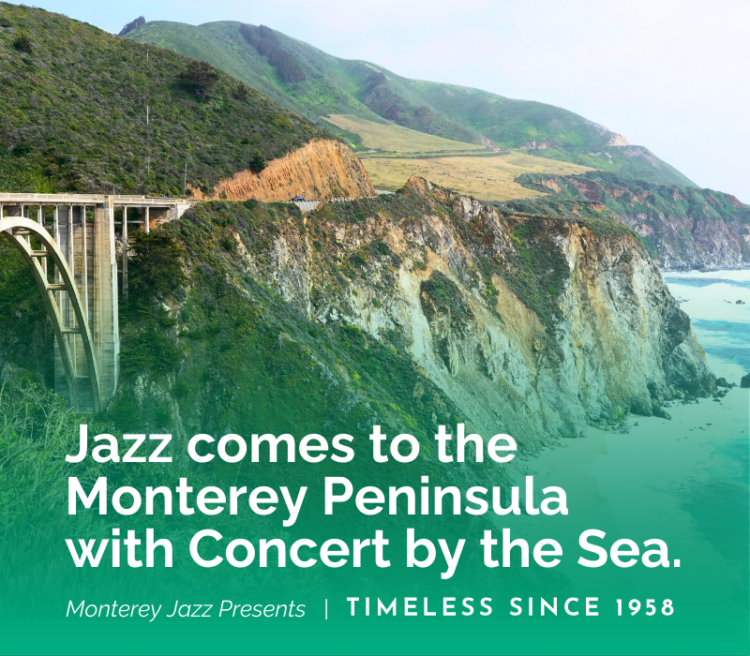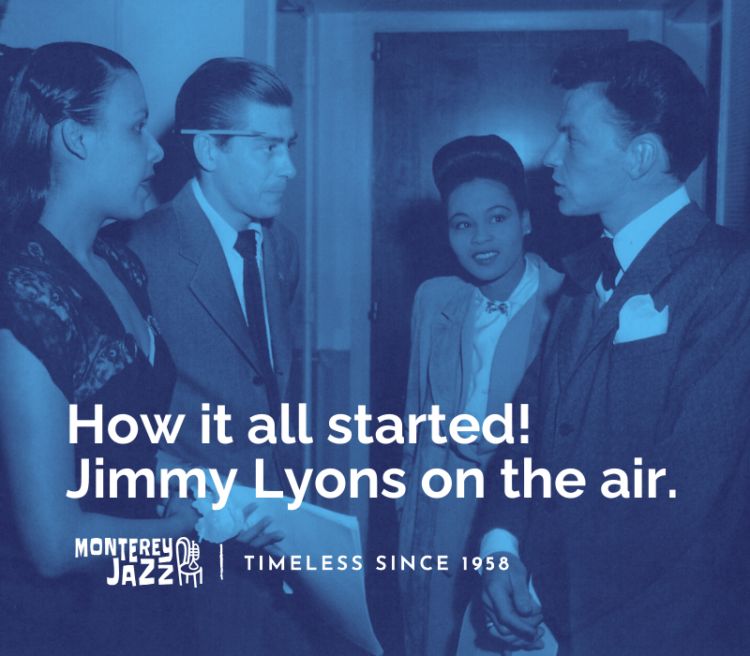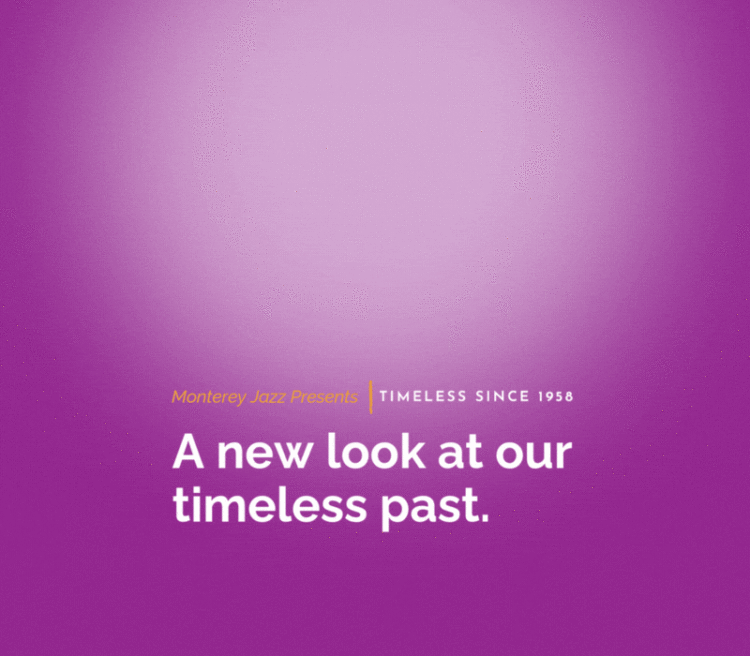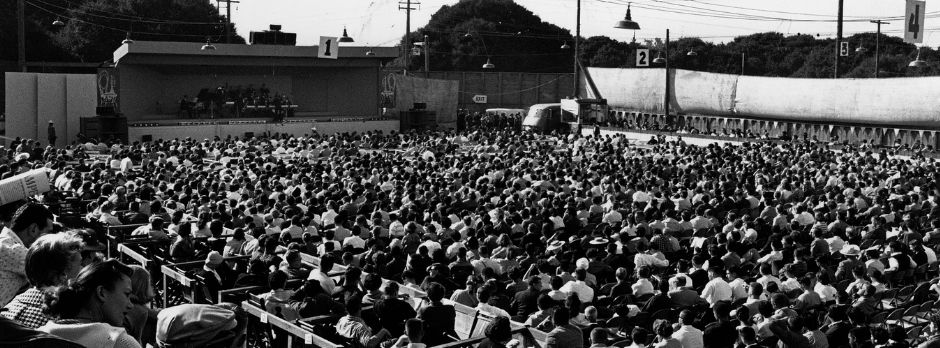
After the success of the Newport Jazz Festival in Rhode Island beginning in 1954, Jimmy Lyons and Ralph Gleason combined Rolodexes in 1956 and contacted the jazz elite about performing at their inaugural Central California festival, scheduled for the fall of 1958. Their mission, they explained, was to move jazz out of the dingy smoky urban nightclubs and out into the clean outdoors, under a new environment of bright sunshine and brisk night air. After Lyons and Gleason chose the Monterey Fairgrounds complex as their ideal locale, Jimmy combed the Monterey business community in search of funding and support. While the Newport Jazz organizers faced distrust among Rhode Island locals, Lyons’s experience was the opposite. Monterey Peninsula merchants were eager to attract more tourism to the area to combat the collapsed Cannery Row sardine industry.
Local educators and politicians were buzzed. Lyons solicited $100 donations to raise the capital to produce the festival, and to seal the deal, the Dave Brubeck Quartet played for the Monterey City Council before they voted in favor of issuing festival permits. A promotional photograph was even taken of the quartet standing on the midway grass at the fairgrounds.
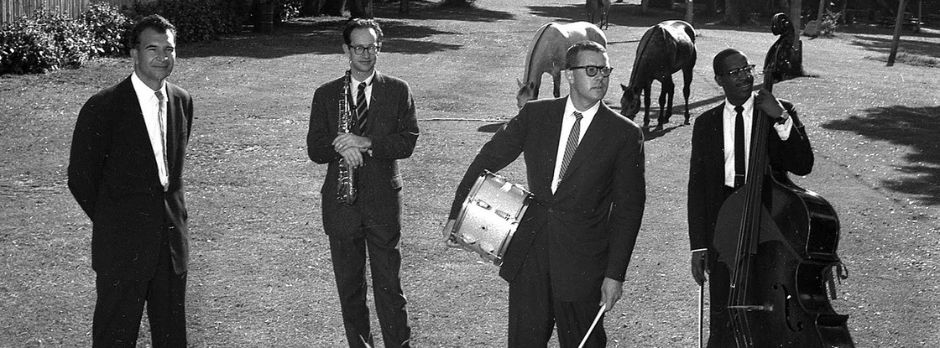
From the beginning, the festival bore an unmistakably local Monterey Peninsula stamp. MJF’s first governing board included a printer, a wholesale meat dealer, a dentist, a public accountant, a doctor, a newspaper editor, and a high school basketball coach. Education was an early component of the Festival and by 1959, a portion of the Festival’s profits went to Monterey Peninsula College for music department scholarships and the creation of a jazz department chair at the school. A chair of jazz. “I sat with an artist for weeks and weeks and weeks, a man named Coldie Whitman,” Lyons told author Ira Kamin in 1978. “He must have done a thousand sketches until he finally got the logo, which is the horn sitting on the old-fashioned ice-cream-store chair. That to me denoted the chair of jazz.”
Brubeck, along with Louis Armstrong, Billie Holiday, Dizzy Gillespie, Cal Tjader, Harry James and His Orchestra, the Modern Jazz Quartet, and many others were booked among the esteemed headliners of the first Monterey Jazz Festival, October 3-5, 1958. Thousands of jazz fanatics, assorted bebop hipsters, society page shakers, local politico movers, and other cool breeze West Coasters, all converged on a newly constructed plywood box stage in the fairgrounds arena which had been previously used for rodeos.
A $35,000 state-of-the-art sound system was provided by Ampex. Press, television, and radio representatives arrived from as far away as Chicago and Tokyo. There were press facilities and press conferences to inform the public of MJF’s jazz mission and other topics of the day. Organizers even tried to mollify the local military bases and airports to control distracting overhead aviation, but to no avail.
“On a chilly Friday, October 3, Louis Armstrong and his All-Stars strolled on stage to play the last set of opening night,” wrote author Bill Minor. Emcee John Birks “Dizzy” Gillespie got down on his knees, then rose and kissed Armstrong’s hand. Many people in the audience thought he was clowning, but he wasn’t. These two icons, leaders of their respective schools — classic jazz, or Dixieland, and bebop — merged in that magic moment, the kind people came to expect during the next 40 years of the Monterey Jazz Festival,” wrote author Bill Minor.
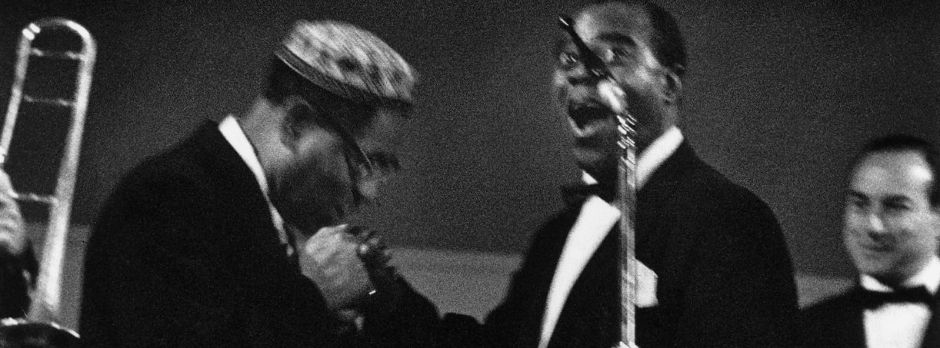
When Billie Holiday arrived at the fairgrounds on October 5, Lady Day relaxed in the doorway of her trailer-dressing room with her fur coat on, holding a tiny dog. “It’s sure beautiful here,” she sighed. Under the influence, Billie wore a tight-fitting skirt onstage and swayed uneasily from side to side, propped up by horn players Buddy DeFranco and Gerry Mulligan. Holiday’s October 5 performance would be her only MJF appearance.
“The people fell apart because it really was Billie Holiday up there singing,” recalled Lyons in 1978 to author Ira Kamin. “Not much was left of Lady Day’s fine voice by this time, although it still gave you goose bumps, a voice that — with its unique phrasing — had the crowd enthralled,” wrote author Bill Minor. Billie would die nine months later at the age of 44.
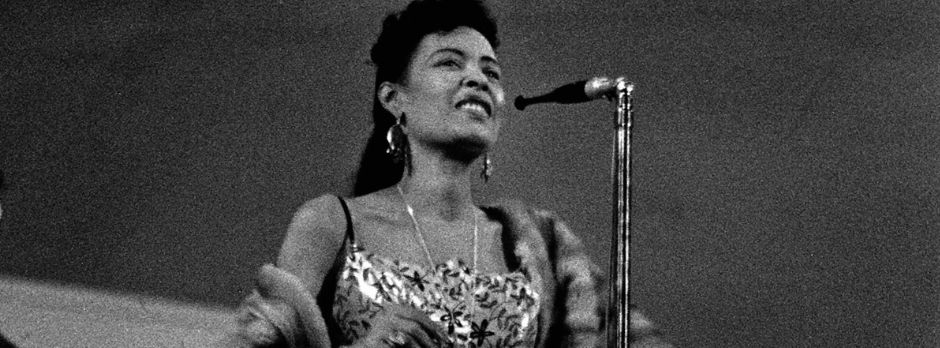
“On the Monday morning after the end of the 1958 festival, Jimmy Lyons, Ralph Gleason, and festival publicist Grover Sales met with pianist John Lewis of the Modern Jazz Quartet,” wrote Indiana Public Media in a 2023 retrospective. “The logistics of the festival had been messy (symbolized by the chaotic, discordant jam session that had served as its finale), and it had grossed only 600 dollars. ‘It was a real baptism by fire,’ Lyons later said. The future of the festival at that point was no sure thing.” Artistically, though, it was deemed a success. That morning Lewis was offered — and accepted — the position of “musical consultant.” For the next 25 years, he would help shape the sound and forge the identity of the festival through his choice of artists. As Ralph Gleason wrote, “Monterey is the only jazz festival which gives the jazz musician himself a voice in the planning, preparation and programming.”
Lineup of the inaugural Monterey Jazz Festival
October 3-5, 1958
Dizzy Gillespie, Master of Ceremonies
Mort Sahl, Master of Ceremonies
Louis Armstrong All-Stars
Dizzy Gillespie Quintet
Dave Brubeck Quartet
Dave Brubeck “Jazz Impressions of Eurasia”
Cal Tjader Sextet
Gerry Mulligan Quartet with Art Farmer
Billie Holiday
Max Roach Quintet w/George Coleman & Booker Little
Sonny Rollins
Milt Jackson
Modern Jazz Quartet performing works by Werner Heider & Andre Hodier
Pete Phillips with Max Roach “Toccata for Jazz Percussions & Orchestra”
Shelly Manne & His Men
Jimmy Giuffre Three with Bob Brookmeyer & Jim Hall “Western Suite”
Monterey Jazz Festival Symphony with Gregory Millar, conductor
Harry James Orchestra
Benny Carter
Ernestine Anderson with Gerald Wiggins
Jake Stock & the Abalone Stompers
Rudy Salvini Band
Salvini-Flory Bands with Pete Rugulo, conductor
Virgil Gonsalves Sextet
Med Flory Band
Mel Lewis-Bill Holman Quintet
Burt Bales & the Dixie All-Stars
Lizzie Miles
Betty Bennett
Brew Moore & Dickie Mills Quintet
Leroy Vinnegar Quartet with Teddy Edwards
Mastersounds with Wes, Buddy & Monk Montgomery
Buddy DeFranco
Ed Zubov Band
Grace Stock
Claude Gilroy Quintet
This article is adapted from these sources:
The Art of Jazz: Monterey Jazz Festival 50 Years
by Keith and Kent Zimmerman (2007)
Monterey Jazz Festival: Forty Legendary Years
by Bill Minor and Bill Wishner (1997)
Dizzy, Duke, the Count, and Me: The Story of the Monterey Jazz Festival
by Jimmy Lyons and Ira Kamin (1978)
Indiana Public Media
Monterey Jazz Festival Archives

